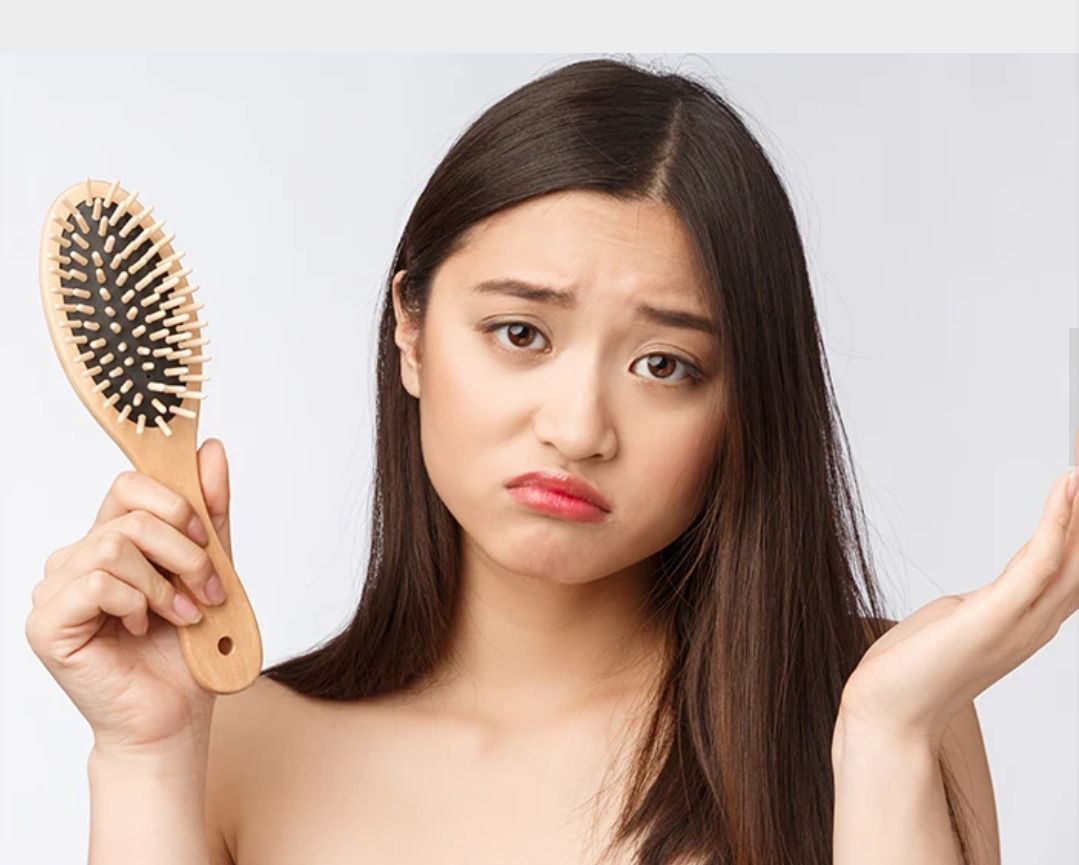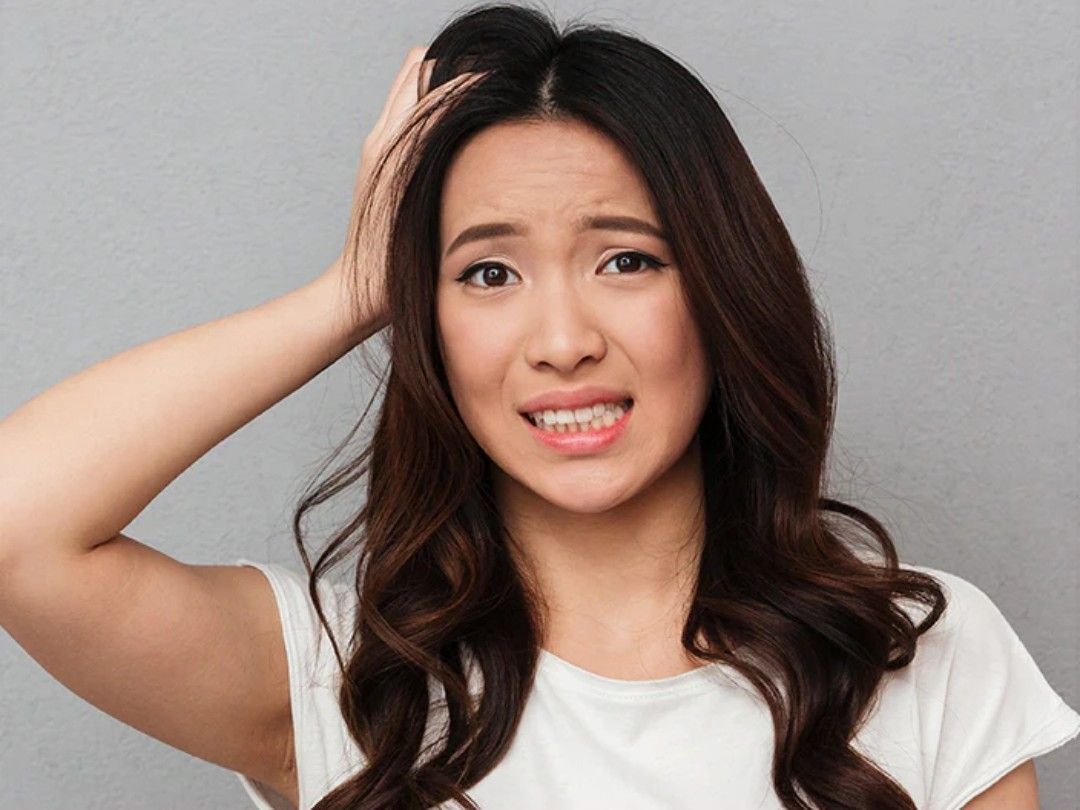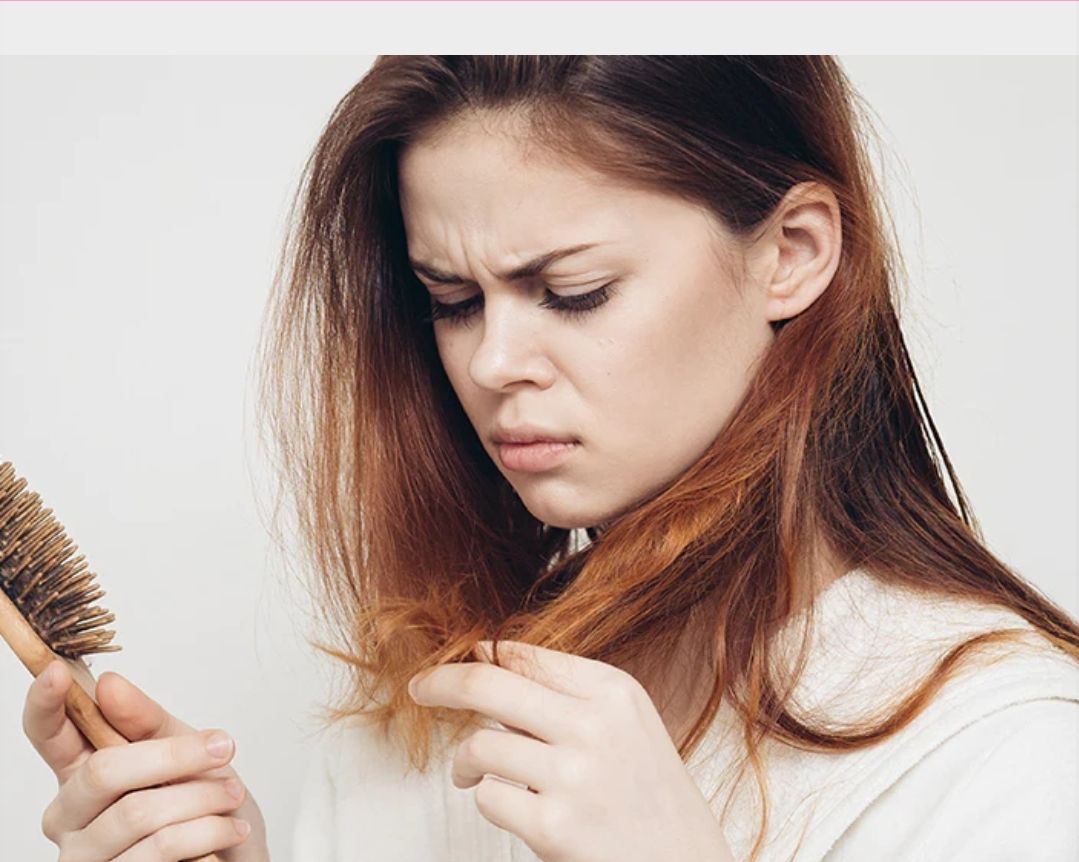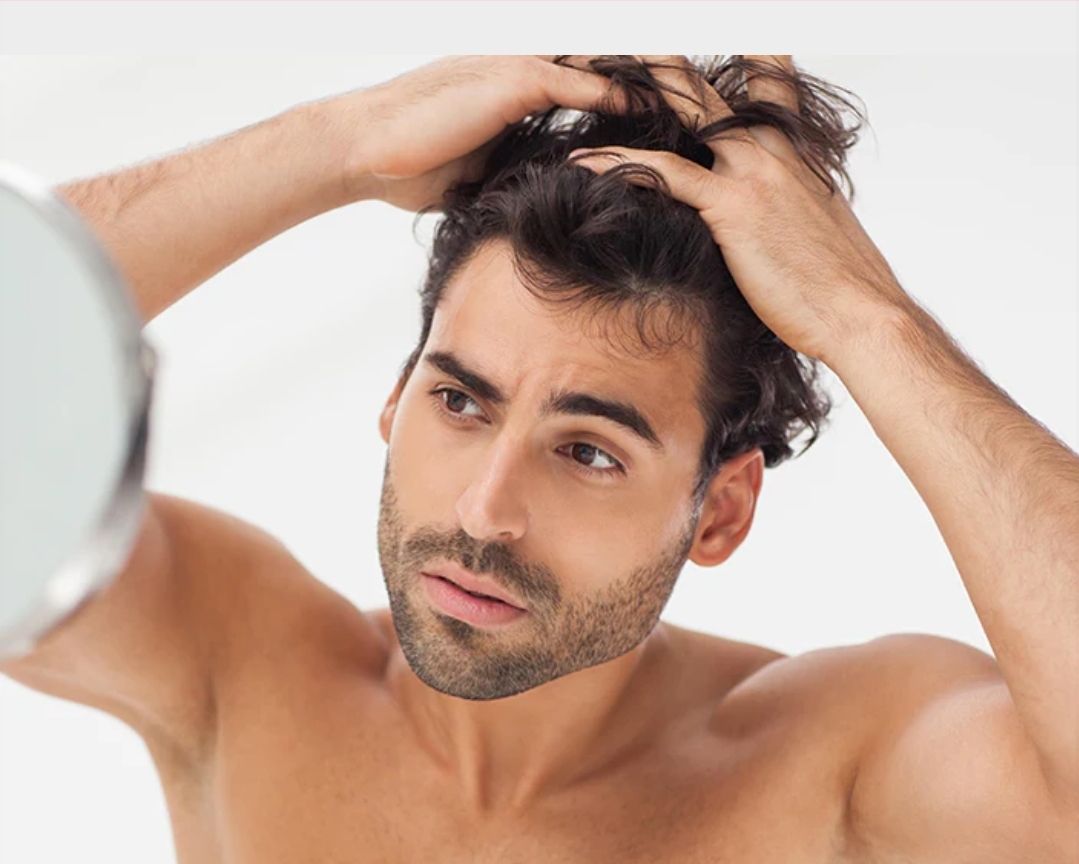Why am I losing my hair?
What exactly can I do to stop the fallout and increase their number? How to understand for sure whether hair loss - female or male - is physiological or pathological, and how to choose the appropriate remedies.
Seasonal, climatic changes or simply physiological: hair loss is a completely natural phenomenon.
Incorrect nutrition, vitamin deficiency and other dynamics can in fact cause abnormal hair loss , which needs to be investigated.




Hair Loss Occurs More Frequently in Men
There are three situations that we tend to talk about, namely: androgenic alopecia, baldness and thinning hair.
Sometimes they can also appear very early (around the age of 20) but it is necessary to intervene promptly, to evaluate whether it is a physiological or pathological fall.
The causes can be stress, weight loss diets, smoking, exposure to UV rays, various types of deficiencies , illnesses and the use of medicines.
For many men it is taboo to talk about hair loss , considering it normal and even inevitable. In reality you can do something and slow it down, if not even counter it.
You may consult with our advisors at Beverly Hills Hair Restoration www.beverlyhillshr.com to ascertain whether it is a genetic predisposition or if there is something else hiding behind the thinning.
Often we also tend to think that this is due to a hormonal imbalance: in fact it is not a matter of excesses, but of a different sensitivity of the follicle to the same hormones.
Due to the greater amount of DHT at the follicular level in some areas of the head, the same dihydrotestosterone damages the follicle: the hair growth phase consequently shortens and causes miniaturization of the follicle and, obviously, of the hair.

Even Women, Albeit To Different Extents, Can Suffer From Hair Loss.
In this case there are four main dynamics to consider: female seborrheic alopecia, excessive hair loss, hair loss during breastfeeding and gradual and progressive hair thinning .
Female hair loss is mainly determined by two factors: telogen effluvium and androgenic alopecia .
The former is the most frequent and is caused by stress, nutritional deficiencies, strict diets and treatments with aggressive products and methods.
Not least, any infections and diseases affecting the endocrine system.
Furthermore, female cyclicality is often underestimated but its phases are a gift to be discovered, from adolescence to menopause.
Here crucial moments such as pregnancy, childbirth, the second spring (as it is called in the east) can affect the hair and its eventual fall.
In the case of female androgenetic alopecia, on the other hand, the thinning starts from the vertex of the head and gradually spreads out in a radial pattern.

Hair Life Cycle
The process of hair growth occurs in distinct sequential stages: Anagen is the active growth phase, Catagen is the regression of the hair follicle phase, Telogen is the resting stage, Exogen is the active shedding of hair phase and Kenogen is the phase between the empty hair follicle and the growth of new hair.


This Is The Growth Stage And Lasts From Three To Seven Years
During this stage the hair grows steadily about one centimeter per month.
It is the moment in which the structures affecting the hair annex are formed, i.e. the papilla, the bulb, the sebaceous gland, the erector muscle of the hair and the follicle itself.
This is where the synthesis of melanin takes place , which is deposited in the cells of the hair cortex and moves upwards as it grows.
In the case of baldness, the Anagen lasts from three to five months , without exceeding this length (by a maximum of two inches).
THE PROCYANIDINS OF MELANNURCA CAMPANA AND THE DISCOVERIES ON HAIR GROWTH
Numerous scientific studies have indicated oligomeric procyanidins as compounds capable of promoting the growth of hair epithelial cells and inducing the Anagen phase of the hair bulb life cycle. On the basis of these assumptions, very recent studies – and in particular a research born in our collaboration with the Faculty of Pharmacy within the University of Naples – have made it possible to isolate a particular polyphenolic phytocomplex from Melannurca Campana PGI.
The effectiveness of this specific extract on hair growth and trophism has been demonstrated with both in vitro and human tests. The studies were followed by various scientific publications, which led to the formulation of our proprietary Never Bald Annurmets Formula, an innovative nutraceutical which increases the growth and number of hair, with proven and recognized efficacy.

This Is The Transition Phase And Lasts Approximately Twenty Days
The catagen phase is a short transition stage that occurs at the end of the anagen phase and is characterized by a transition into quiescence. During this phase, which can last a few weeks, the hair follicle undergoes apoptosis-driven regression and loses about one-sixth of its standard diameter. It signals the end of the active growth of a hair and cuts individual hairs off from the blood supply and from the cells that produce new hair. Approximately 3% of all hairs are in this stage at any time. The hair is already formed and grows towards the more superficial layers of the epidermis.
It is as if the follicle is resting ; the papilla decreases in size.

This Is The Resting Phase And Lasts From Sixty To Ninety Days
The telogen stage is the rest stage and during this phase the hair does not grow but stays attached to the follicle. At the end of this 3- to 4-month phase, some of your hair falls out. Losing up to 100 hairs a day is normal. When a hair falls out, a new hair is grown in the same hair follicle, and the growing cycle begins again. However, the vital activities of the hair during this phase have stopped, rendering the hair practically "dead". A doctor can test your hair and if it is in the telogen phase if they gently tug on some hairs on your scalp and four or more hairs come out. The hairs will look like hairs in the telogen phase — they will have a white bulb at the end that was in the scalp and will not have a gel-like covering around that end of the hair. Unlike the others, this phase affects 10% of the hair that remains on the scalp for some time before falling out. Note: Anagen will immediately follow telogen if hair is not shed at the end of telogen during the exogen phase.

This Is The Shedding Phase And Lasts 2 To 4 Months
The Exogen phase represents the detaching of hair roots when they reach the terminal position in the follicles and the resting hair is gradually loosened resulting in shedding of the hair. Once a hair reaches the exogen phase, there is nothing you can do to prevent the hair falling out. After the exogen phase, the hair follicle returns to the anagen phase and works on growing the new hair that was beneath the club hair. During the exogen phase, hair is shed from the scalp, often helped along by washing and brushing. Losing 50 to 100 hairs per day during the exogen phase is normal. During the exogen phase, which can last about 2 to 5 months, new hairs are growing in the follicles as old hairs fall away.
After the exogen phase, the follicle then enters a state called Kenogen which indicates the physiological interval of the hair cycle in which the hair follicle remains empty after the telogen hair has been extruded and before a new anagen hair emerges.
Physiological And Pathological Hair Loss
Hair loss is in most cases a natural, physiological process.
Nothing to worry about, therefore, as long as all the phases of the regrowth cycle follow one another correctly.
However, if the phenomenon is caused by exogenous, genetic or hormonal factors, it is necessary to investigate further. In these cases it is possible that the "dying" structures are not replaced by strong and healthy hair.
Scientific research has shown that approximately 70% of men and 40% of women are affected by baldness.
Hair loss can therefore be physiological or pathological.
In the second case, to understand the real reason for hair loss, we can resort to the study of androgen hormones and genetic predisposition . We therefore speak of androgenetic alopecia (both female and male), which is linked to the production of androgen hormones. In the case of women, obviously, the presence is revealed in lower concentrations.
Causes Of Hair Loss
As anticipated, there are mechanisms that can cause hair loss.
If it is a physiological hair loss then the reason could be the seasonal change or the cyclical phases of the hair's life.
If, on the other hand, it is pathological then the cause must be sought in hormonal and genetic factors.
Some red flags for hair loss:
How to understand if hair loss is physiological or should we run for cover soon? Here are the alarm bells to observe carefully:
- thinning, localized or generalized.
- copious hair loss (when washing or brushing)
- discomfort or pain when brushing
- itching, flaking, dandruff, redness
Below we will list all the factors that can affect hair loss
SMOKING AND HAIR LOSS
Smoking damages the blood vessels that supply nourishment to the hair, therefore smoking or frequent exposure to passive smoke affects the health of the hair.Not only that: it alters DNA and damages hair bulbs
ALCOHOL AND HAIR LOSS
As with smoking, alcohol contributes to oxidative stress on the hair, furthermore favoring situations of organic stress.
STRESS AND HAIR LOSS
Speaking of stress, mental and emotional overload also has a major impact on the well-being of the hair, therefore if the hair seems to be thinning it could be a sign of physical and psychological fatigue that should not be underestimated.
PATHOLOGICAL HAIR LOSS
As mentioned, when we enter the pathological sphere of hair loss we speak of alopecia. There are mainly three types: androgenetic, areata and cicatricial.In the second and third cases it is inflammatory pathologies while in the first it is hereditary or genetic (and hardly regresses).
POLLUTION AND AGGRESSIVE SUBSTANCES
The environment in which you live favors or not hair loss.Those who live in a highly polluted area are more likely to have hair and scalp problems.In fact, endogenous factors such as air and water quality have a direct influence on the body.Not only that: even shampoos, cosmetics and other personal care products can be aggressive and weaken the scalp, the skin and the entire endocrine system.
AGGRESSIVE TREATMENTS AND HAIR LOSS
We often warm about aggressive products which often present themselves to the consumer "in disguise" pretending to be delicate and harmless, but there are also some unsuspected practices that can contribute to hair loss. This concerns, for example, their drying and styling .
Using the hair dryer too close to the skin and at maximum power can weaken the hair.
Just as too constrictive hairstyles, which involve too tight laces and which therefore pull the hair, damage the hair in the long run.
NUTRITION AND HAIR LOSS
If more than 100 hairs fall out in a day (amount considered absolutely normal), it could be that the body is in a situation of deficiency due to lack of the right amount of vitamins .Diets poor in nutrients, not very varied or healthy could trigger a response from the hair, which falls out precisely because it doesn't "eat" (or "drink") enough.Therefore, pay attention to your diet, paying particular attention to the intake of iron, vitamins of group B, vitamin A, vitamin H and vitamin E.

